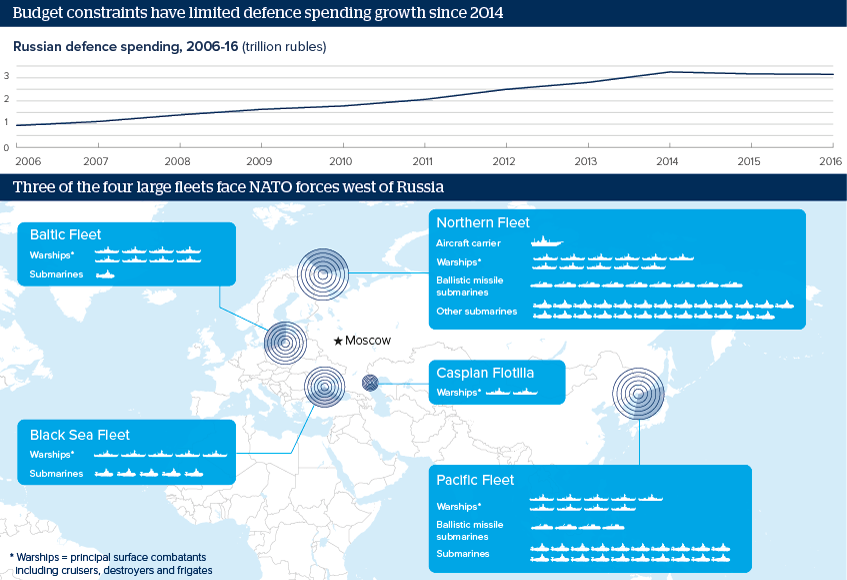Russian navy will grow assertive despite ageing fleet
The navy's contribution to the Syrian military operation showed its effectiveness operating close to Russian shores

Source: Stockholm International Peace Research Institute, International Institute for Strategic Studies: Military Balance 2016; Russian government data
Outlook
After decay in the 1990s, the Russian navy is modernising, although an ambitious shipbuilding programme has progressed slowly due to high costs and supply disruptions. Submarine-launched missiles will remain an important part of the nuclear arsenal. The surface fleet will be mainly deployed in Russia's immediate environs, as having the capacity to emulate the US navy's blue-water reach is a long way off.
The focus will be in western regions: confronting NATO in the Baltic, seeking Arctic dominance and projecting power in the Black Sea and eastern Mediterranean, from where warships will provide airspace defence over Syria while delivering a clear statement of Russian power.
Impacts
- Procurement of large new combat vessels will run well beyond the 2020 deadline.
- Ageing cruisers will be kept in service for their impressive presence and ability to carry modern air-defence missiles.
- The Syrian base at Tartus will be protected at all costs as Russia's only major naval facility abroad.
- A family of cruise missiles will provide an effective way of extending Russia's reach.
See also
- New missiles to maximise Russian navy's limited reach - Oct 1, 2019
- Russian naval shipbuilding set to gather pace at last - Jul 24, 2019
- New missiles to up-arm old Russian ships - Aug 22, 2017
- Fortress Kaliningrad key to Russia's assertive shield - Jul 21, 2017
- US-Russian nuclear arms treaty may lose relevance - Apr 24, 2017
- Budget constrains Russia's arms purchase plans - Feb 27, 2017
- Moscow will press Arctic claims with law and military - Feb 24, 2017
- Russia will expand Mediterranean presence despite EU - Oct 27, 2016
- Russia plan to expand Syrian naval base fits its aims - Oct 11, 2016
- Russian-Chinese naval collaboration has limits - Oct 7, 2016
- Russian navy purge will slow Baltic assertive capacity - Jul 29, 2016
- Russia's defence spending under budgetary pressure - Jul 28, 2016
- Black Sea Fleet projects Russian power westwards - Apr 15, 2016
- More graphic analysis